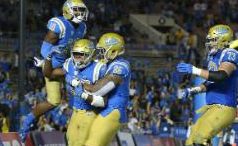
While almost all of us agree that there are some exploitations in the way college athletes are compensated, you have to wonder whether the “solution” is the proposed Name, Image and Likeness (NIL) law that was passed in California and is now being proposed in many other states.
The concept of the law itself is superficially appealing because it appears to create an avenue for athletes to get compensated for their Name, Image and Likeness, something that has been prohibited up to this point. The challenge in this situation is going to be how the NCAA attempts to regulate the manner in which the athletes can be compensated. Up to this point, the NCAA has struggled to consistently apply its regulations. While the attempts by states to influence the NCAA to change are noble, let’s take a look at whether they will really achieve the articulated goals.
Reading through the California law, the proposed New York law and the proposed Florida law, none of them account for the very real challenges and potential for abuse. While the pressure from the states will ultimately force the NCAA’s hand and require it to allow NIL compensation, what the state laws do not address is what “other” ways the NCAA can regulate compensation for athletes and influence athlete eligibility.
The goal of most fans, most college athletes, as well as the critics of the NCAA, is to find a mechanism to allow the athletes to be compensated during their athletic careers. Some people want to call their scholarships compensation, which in and of itself would cause problems with workers compensation, insurance and much more. While people often say that the scholarship is “not enough”, at many schools, the total cost of attendance is in the range of $40,000 to $50,000. In addition, nobody can deny that the athletes (for all sports), get an array of services that is far beyond what the typical student would receive (food, supplements, tutoring, academic support, athletic training, medical treatments, strength and conditioning, use of facilities and more). At the recent Chicago Sports Summit, DePaul University Athletic Director Jean Lenti Ponsetto estimated the total allocated cost for supporting an athlete at $250,000 to $300,000. Included in this total was an allocation of all of the support services for the athletes, other than the out of proportion salaries for head coaches for football and men’s basketball. So essentially, her number includes salaries for assistant coaches, athletic trainers, strength and conditioning coaches, academic support services, nutrition, sports information directors, team managers and more.
When we hear athletes complain that they are not getting “enough”, one question that is frequently raised is what type of compensation these athletes would get if they walked out of high school and tried to get a “normal job.” In today’s world, I think we would all be hard pressed to find a situation where a high school grad would be able to get a job paying $50,000 per year absent some special skills.
So while we applaud the state’s for pushing this issue and forcing the NCAA’s hand, we have to remember that there is going to be a lot of work to handle this enormous change in college sports, one which neither the NCAA nor the states are equipped to handle.
THE PROBLEMS
Some of the problems with these laws include the following:
- No restriction on how the athletes can be paid
- No restriction on when they can be paid (i.e. before enrolling or playing in actual games)
- No requirement of reasonableness or market rate (see below)
WHERE THE ABUSE WILL COME INTO PLAY
The state laws simple make it illegal to invalidate the eligibility for players who are compensated for their name, image and likeness. However, without a mechanism to handle the anticipated abuses, we are simply going to see some “legitimate” compensation to high profile athletes and a lot of underground payments to athletes who truly have no marketability.
For example, look at the NFL. Very few players have actual endorsement deals. VERY FEW. On a national level, the number is probably lower than 25. On a local level on each NFL team, with a few exceptions, you might have a dozen players that are actually being paid for endorsements and perhaps another dozen that are getting something in trade (restaurants, car dealerships, bars, etc.).
Under the proposed state regulations, any “payment” to an athlete can be disguised as a NIL payment. Hey, you are a good looking kid, if you are here in Columbus playing for Ohio State, we could put you on our car dealership calendar or give you the use of a vehicle.
How would that be regulated? Should it be regulated at all or should we let the free market forces take over entirely in this space? The challenge is how we are going to make this an allegedly level playing field. If you were to take “true market value” of college athletes, there would be less than a dozen players on any college team that merit consideration for NIL compensation. It is easy for us to earmark payments to an athlete when they are a Heisman contender or star player. We can take a percentage of their jersey sales or we can figure out the media value of them being used on a billboard or in a promotional advertising campaign. But going into to college, how many athletes have that power? I would hate to see a restriction on when a player can get paid because they will create too much subjectivity.
My skeptical side says cheating will still go on. Underground payments will still occur. They will just be disguised differently.
It will be interesting to watch the NCAA’s reaction. With other states jumping on board with California, the NCAA is definitely running out of time and I would anticipate seeing some response from them before the end of 2019.